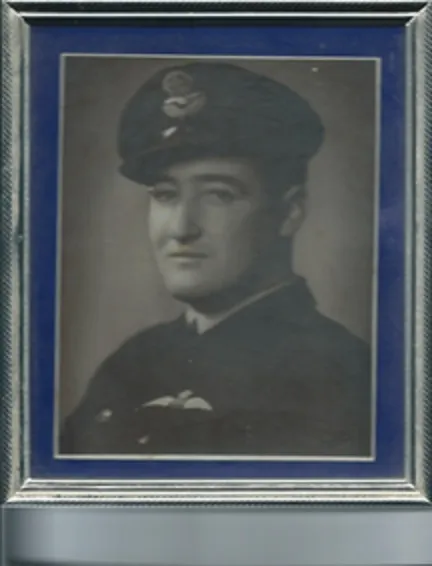FLTLT Robert Armstrong 403463



| Squadron/s | 452 SQN 109 MFCU |
| Rank On Discharge/Death | Flight Lieutenant (FLTLT) |
| Nickname | Bob |
| Mustering / Specialisation | Pilot, Controller |
| Date of Birth | 11 May 1917 |
Bob Armstrong was born on 11 May 1917 in Tenterfield New South Wales, second son of Mary and Robert Armstrong. He joined the family sawmilling company Armstrong Brothers to learn the business from the ground up, showing a flair for mathematics.
With war declared, at 23 years of age Bob travelled to Sydney and enlisted in the RAAF in January 1941 initially as Aircrew and undertook training in Uplands Ontario and then Halifax Nova Scotia on attachment to the Royal Canadian Air Force. On completion of Service Flying Training School, he was awarded his Flying Badge “wings” and granted a Commission on 1 September 1941.
Pilot Officer Armstrong embarked for the United Kingdom on attachment to the RAF to undertake Advanced Fighter Training and on successful completion was posted to 452 Squadron RAAF in December 1941 flying Spitfires. He was based with the Squadron at RAF Kenley and RAF Redhill in Surrey, and RAF Andreas on the Isle of Man. The focus of Squadron operations was the escort of bombing raids and conducting sweeps over occupied Belgium and France, as well as defensive patrols over Britain and the English Channel. During that time he was promoted to Flying Officer in March 1942 and often flew as No. 2 to Keith “Bluey” Truscott DFC. He also gained the moniker “George” among his mates due to his likeness to the comedian George Formby.
When 452 Squadron were withdrawn from operations in Britain, Bob returned on the troopship MV Stirling Castle to Melbourne Australia, arriving on 13 August 1942. The Squadron commenced refresher training at Richmond and then test flying at Bankstown when the Spitfires finally arrived and were re-assembled in preparation for deployment to Darwin.
Bob was seriously injured in a flying accident on 17 December 1942 when the starboard wheel stub axle of the Spitfire he was test flying sheared off on landing, with the oleo leg digging into the ground causing the aircraft to flip on its back at speed (ADF Serials Spitfire A58-91 at http://www.adf-serials.com.au/2a58.htm). He suffered a compound fracture to his left femur, leaving him incapacitated for a year which effectively ended his combat flying career.
Undeterred, Flight Lieutenant Armstrong commenced Controller training December 1943 and in April 1944 was posted to 109 Mobile Fighter Control Unit and deployed to Dobodura and then Madang in Papua New Guinea until January 1945. 109 MFCU controlled and checked squadron movements, collating reports of aircraft and ship sightings with intelligence gathered by radar units in order to determine counter-measures to enemy actions. The Chief Controller received reports direct from fighter pilots in the air and attempted to ensure that best advantage was obtained and every tactical opportunity was seized. Bob was Acting Squadron Leader from 15 November 1944 until demobilisation on 12 September 1945. For his service Bob was awarded the 1939-45 Star, Air Crew Europe Star, Pacific Star, War Medal 1939-45 and the Australian Service Medal 1939-45.
Bob resumed his civilian occupation as Managing Director of his family’s sawmilling company in Tamworth NSW, having married Shirley Evans from Murtoa Victoria in Melbourne in 1945. He died in September 1989 aged 72, survived by his former wife and two children Susan and James (Jim) Armstrong.
Bob's photo supplied courtesy of the Armstrong Family